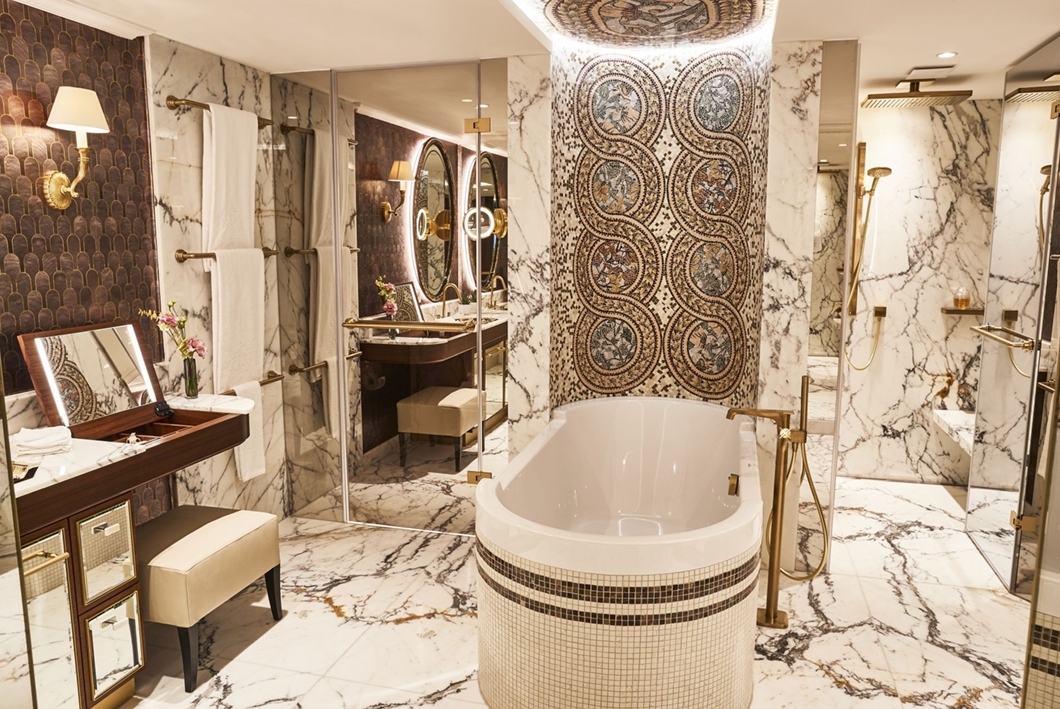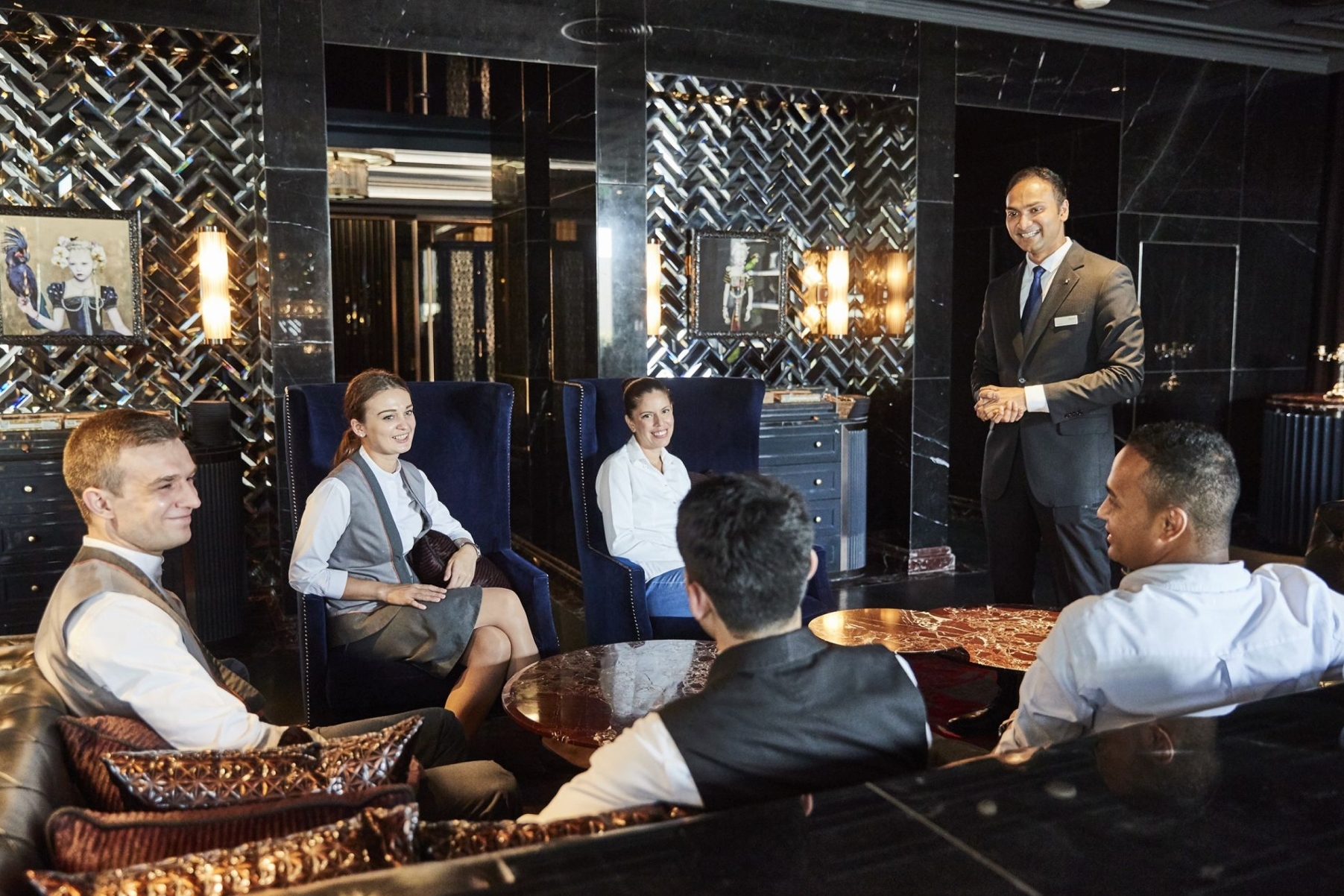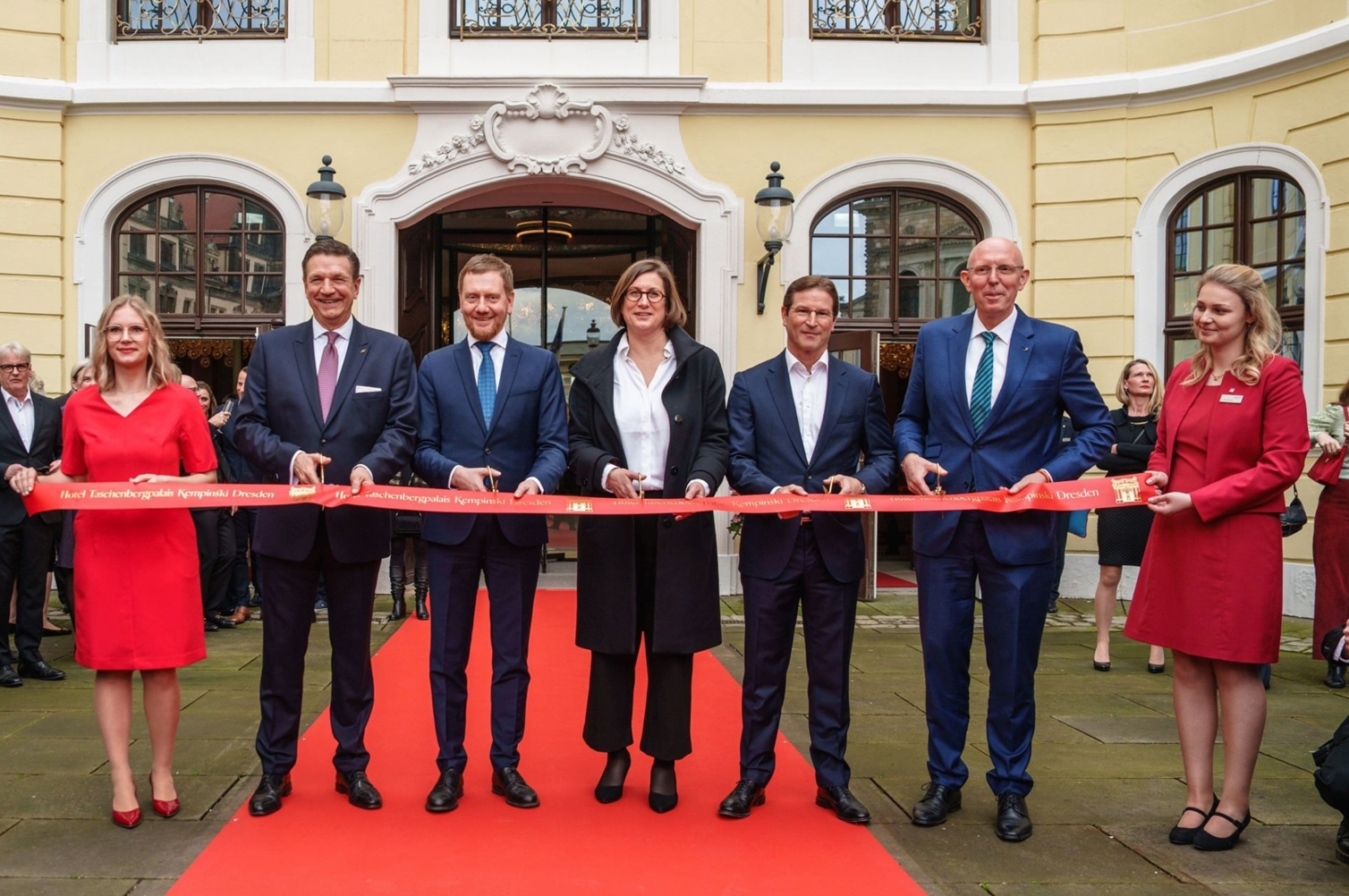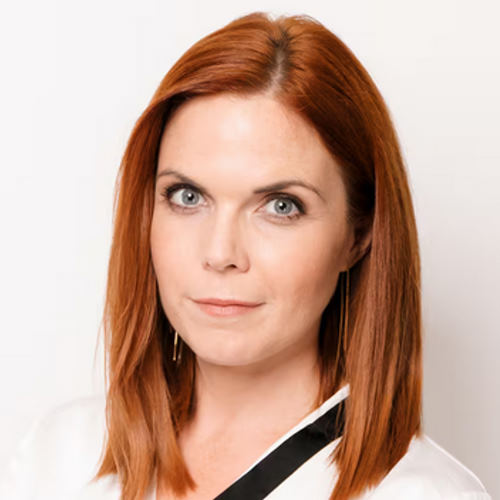Kempinski Hotels, which currently has 82 hotels, will grow in the future by shrinking by roughly 30 hotels. Pale 5-star hotels will be weeded out, only ultra-luxury gems will survive. Residences will be reduced, the management company should become asset heavy. Kempinski is already undergoing another upheaval. An interview with Group CEO Barbara Muckermann.
Born in Germany, she has lived in the United States for the past 25 years, and it’s clear in our interview, conduct ed in German, she's made a special effort to brush up on her vocabulary. This makes her likeable, as does her outward appearance; she answers questions directly and is convinced of the new strategy. Nevertheless, she seems unsure; she had only visited a few hotels before our interview
Barbara Muckermann has spent her entire career in the cruise industry; her focus on sales and marketing runs through her CV. Her last stop was the luxury shipping company Silversea Cruises, which she joined in November 2016 as Chief Marketing Officer, advanced to Chief Commercial Officer and spent the last 16 months as President and CEO - succeeding her husband Roberto Martinoli, as she confirmed to us on request.
"I was lucky enough to build a great brand with Silversea, I left the company in very good shape and for that reason I was attracted to the Kempinski opportunity," she says. She was approached by a headhunter and the f irst conversation with the Chairman of the Supervisory Board of Kempinski AG, Ayman Almoayed, had already revealed a positive wavelength, both in terms of the vision for Europe's oldest luxury hotel brand and also with regard to the stability of the owners, of whom she believes that the shareholder side is now stable after several chequered years.
Supervisory Board and shareholders agree
Barbara Muckermann reports that she has the approval of the Supervisory Board and the family owners to im plement the new strategy. The shareholders are also willing to invest a lot of money. The new CEO had the am bitious 9-year plan drawn up by McKinsey & Company (for the financial plan), Russell Reynolds Associates (for the human capital strategy) and Interbrand (for the brand plan).
However, this strategy is more likely to lead Kempinski back into stormy seas rather than a calm harbour. The new CEO has no hospitality experience and little experi ence as a CEO, and neither she nor the external consul tants know the company from the inside.
A bold calculation

Kempinski Hotels currently consists of 82 five-star ho tels and residences in 35 countries and is currently de veloping more than 26 projects worldwide, the group stresses in its latest press releases. Barbara Muckermann, however, no longer wants volume growth, but massive increases in quality to filter out the "real" luxury hotels. One of the ways it intends to achieve this goal is by drastically reducing the size of the group.
Muckermann expressly points out that no exact lists or even decisions on individual hotels have yet been offi cially published. The dialogue with the hotel owners is scheduled to start in mid-February. In our conversation though, she’s keen to remind, there are figures that we should only see as "imaginary" numbers at the moment, but which nevertheless convey a feeling for the new big plans.
Taking these one at a time: Of the 82 hotels, 28 are owned by Kempinski's joint venture with its Chinese partner Beijing Tourism Group (BTG); it is one of the top ten tourism groups in the country and held a 15% stake in Kempinski AG until 2018. This investment had been linked to an exit option, which BTG exercised. The then CEO Markus Semer then succeeded in retaining the influential partner at Kempinski for the long term: The JV was established in 2018 for the next 50 (!) years and is implemented via a company called Key Company.
This is another reason why Muckermann said succinctly in our interview that the BTG luxury hotels would not be touched, ‘"they are different from the western world." There are good reasons for this, as Kempinski experts explain to us: If the JV were to be cut, Kempinski as a company would shrink by a third. Pulling out of one of the world's fastest-growing markets would be life-threatening for Kempinski.
It would be unwise in another respect: According to our sources, the joint venture is a pure and smoothly run ning profit machine for Kempinski, as costs are low and sales are high. In total, around 65-70% of the substan tial fees go directly to Kempinski, with the remainder going to the Chinese partners. Even in the difficult Covid years, the JV still had cash and continued to pay its dividends, it was reported. This partnership therefore seems to be a good life insurance policy
Discussions on brand standards in sight
Accordingly, the focus will initially be on the remaining 54 hotels. Under certain circumstances, thinking in this "imaginary" way, one might no longer want to classify 30 hotels of the group under the Kempinski brand. Even stretched over a number of years though, if this were to happen, it would be a massive cut for the group. It would mean a reduction to only 23 hotels outside of China. With the Chinese hotels, Kempinski would count 51 hotels in total.
"We have a number of projects in our portfolio that do not bring any brand value and some with low profitability," argues the Group CEO. "The brand has been stretched too far and for that we have some hotels that are only bringing an ADR of $80 a day, whereas others are over $1,000," she adds.
The hotel owners demand standards and Kempinski has to deliver. The group will of course adhere to existing contracts. So far, she has identified the group of weak Kempinski hotels in a "desktop exercise"; by the end of this year, she should have visited the majority of the hotels and the new Kempinski profile should be ready, per haps as a kind of Kempinski Collection.

And what will the plan mean for an owner who wants to keep the Kempinski brand on his roof? "We will work with him; he will have to look at the (new) standards and probably realise himself that he has not invested enough in the property. Of course, this means Kempinski could part with owners who do not wish to switch to the more advanced standards. In that case, Kempinski may lose some fees (if no or only a few top products are acquired by then)," says Barbara Muckermann.
Will the Kempinski shareholders still play along here? "Yes, they will," she stresses. "We have presented a plan to the shareholders." Kempinski might lose a little revenue for a year or two, but that would not harm the group's financial health, she says. "Kempinski is in very good financial shape." The new CEO is thus building on the fruits of the past.
The new strategy immediately raises further questions, such as these two: How much can owners who sign contracts for a term of 20+ years rely on the contractual partner Kempinski remaining true to its strategy? And how much money is set aside for the damage to the reputation, in particular among other stakeholders (em ployees, travel industry, guests, suppliers, etc.)? Questions upon questions, the deeper you think about the new prioritisations.
U-turn towards asset-heavy, key money and fewer residences
The CEO stresses once again: Shareholders are prepared to open their wallets wide, even to buy real estate themselves or involve other investors in projects: "The plan is to become more asset-heavy". This is not difficult at the moment, as Kempinski AG only owns one hotel: the Vier Jahreszeiten Munich.
In the future, it also wants to make heavy use of key money in order to avoid being outbid by competitors (such as the famous Emirates Palace Abu Dhabi, which is now a Mandarin Oriental, editor’s note). "Key money is firm ly budgeted in the new plan," she adds. With this, history repeats itself: In 2013, the then CEO Reto Wittwer was pleased in an interview with hospitalityInside.com that the owner at the time (the Crowne Property Bureau from Thailand) agreed to enter the market with equity in key destinations (see "Related Articles" below). Over the course of the years though, the issue and apparently also the flow of money dried up.
From today's perspective, the two decisions on asset-heavy and key money nevertheless represent a surprising turnaround in the group's financing and development.

The company also no longer intends to enter franchise or manchise agreements, which enabled Kempinski to add two stylish hotels of The Address brand in Dubai to its portfolio in January 2024 (The Boulevard Dubai at the Burj Khalifa and The Central Avenue Dubai at the Dubai Mall). And: The Kempinski Residences will now "take a break" for the time being, says the CEO. "Classic hotels have priority, we only see hotels with residences in markets that we need."
Hospitality insiders shake their heads at the latter. Residences are a cash guarantor through the sale of apartments at or in the hotel, which often finances the hotel construction next to it. So why should this model be slowed down? According to its website, Kempinski currently operates 20 Private Residences and Hotel Residences and has learned: Standalone residences already earn money when they are sold, while mixed-use complexes (e.g. hotel with separate residence next door) can share their administration and guests are pre pared to pay more for the hotel services next door.
The strength of the Kempinski brand on the roof of a residence today allows a premium of around 30% in the rental business compared to a non-branded product, developers know. Individual competitors, such as Four Seasons, for example, achieve higher margins. Kempinski receives a share of the 30% remuneration and at the same time enjoys less work because renting out apartments is relatively risk-free for the group: Their rates are usually in line with those of hotel rooms, but the apartments generally offer more space and comfort. And: Apartment residents stay longer.
Pearl package as a profit maker?
Back to the "imaginary" number 23 - the number of hotels outside China that would represent Kempinski's ultra luxury pearls in the future. Once this collection is in place, wouldn't it be a perfect package for HNWIs or the bil lion-dollar sovereign wealth funds that would buy 23 management contracts immediately? And perhaps the real estate as well? In Arabia and Asia, rich investors confirm such deals with the snap of a finger. Barbara Muckermann rigorously rejects such "fantasies": "The shareholders have not given me a mandate to sell Kempinski," she says, "‘and they don't want to sell it either, but rather build luxury jewels and decide later what to do with them." The new plan is set to take at least five to six years to realise.
Search for new locations
The four most important source markets are Germany, America, the UK and the Gulf States. And this is where Kempinski will now begin to examine and prioritize the hotels and guest wishes to develop a feeling for the next desired destinations of luxury travellers. The latter can include small resorts in Italy with fewer than 100 rooms, but also strong city hotels such as the Vier Jahreszeiten Munich or historic hotels such as the Adlon Berlin [Kempinski showed interest in the Hotel de Crillon Paris, an aristocratic palace, in 2010, but the property was ultimately operated by Rosewood, editor's note].
According to Muckermann, 70% of today's locations are city hotels in key cities. She would therefore like to maintain an equal balance between business and leisure in the future. And she could imagine opening her first hotels in the United States not in the cities, but rather in destinations such as the Caribbean. Maybe there will soon be Kempinski cruise ships there? Barbara Muckermann knows her way around the cruise business.
The human luxury factor
The success of a luxury hotel depends not only on brands and marketing, but at least as much on the service professionals who do everything for the benefit of the guest, professionals who work in a hotel for many years or even decades and know every detail. This is why Muckermann - as previously on cruise ships - is also establishing a "product" department at the hotel group, in which everything will revolve around the hotel (product), the guest and quality improvement.

The head of this department (Chief Product Officer) is Rasha Lababidi and was introduced this week in a press release (see below). Of course, there will also be a new Chief HR Officer from March. Barbara Muckermann would also like to see older GMs who are prepared to train the new generation in line with the Kempinski DNA. She also needs more employees in revenue management, for which she wants to invest a lot of money. Next week, the first global meeting of Kempinski executives will take place in Istanbul. Barbara Muckermann will certainly have to answer many questions there - such as whether assets count for more than seasoned lux ury professionals do. The new plans have already caused a great deal of uncertainty among managers within the company.
The strategy behind the strategy?
Barbara Muckermann is convinced that the new plan will work: Kempinski's best phase can start now, she says. With this strategy of U-turns that deeply interfere with existing contracts, have a negative impact on the balance sheet and demand millions or even billions in additional capital before the new hotels even reap higher sales and margins, this is hard to believe. The "voluntary cut" of a hotel chain, which then recovers like the Phoenix from the ashes, is an incredible vision. That is disruption.
Or is the whole thing deliberate after all? Is this "vision" simply there to push Kempinski aside as an operating company to then get a fantastic return with expensively sold contracts for 30 hotels with an ultra-luxury look? A return that would be higher than that of a colourful mix of 82 hotels?
What is certain is that the Bahraini shareholders of Kempinski are now switching from a passive to an active role - and want to push the value of the management company through real estate investments. Only the family office can actually answer the many questions that arise from the new strategic approach. In 2023, the latter acquired all shares in the luxury hotel group after first BTG and later the Thai Crown Property Bureau (the king's real estate company) sold their shares.
The Kempinski owners are the heirs of the former Prime Minister of Bahrain, the Late HRH Prince Khalifa bin Salman Al Khalifa, who died in 2020 - his wife and three children. The eldest son, Sheikh Ali bin Khalifa Al Khalifa, represents the interests of the community of heirs in the Kempinski matter. And there too, as in every family, there will always be discussions - including and still about the future of the luxury hotel group. / Maria Pütz-Willems
Kempinski: The power of subtleties
Barbara Muckermann was introduced as the successor to Bernold Schroeder as Group Chief Executive Officer for the first time in Kempinski's history. This title did not exist until then. It was also unusual that the new CEO was not - as usual - presented by the Chairman of the Supervisory Board of Kempinski AG (Ayman Almoayed) but was announced by the Chairman of the Board of Directors of the Swiss subsidiary Kempinski S.A. (René Nijhof).
By way of reminder: Kempinski AG, based in Munich, is the parent company of the hotel group, the owner of the Hotel Vier Jahreszeiten Kempinski and the owner of the brand rights. The subsidiary Kempinski S.A., based in Geneva, concludes the management contracts and implements the opera tional business; there is a brand licence agreement with the parent company.

One of the most interesting people among the managers of the two companies is currently René Nijhof. In June 2018, he became a member of the Supervisory Board of Kempinski AG, and in March 2023 he moved to the role of Chairman of Kempinski S.A. He has now climbed the ladder at both com panies: He is currently a member of the Executive Board of Kempinski AG and at the same time Chairman of the Administrative Board of Kempinski Hotels S.A. This makes him one of the people set ting the course in the background and he also supervises Barbara Muckermann's activities.
However, the new CEO does not have the influence of her predecessor Bernold Schroeder: He was even Chairman of the Executive Board of the AG (she is only a board member) and a member of the Administrative Board of the S.A. (she is only the manager of the S.A.). Are the shareholders acting out of caution here or are they demonstrating their new active role?
Presumably the latter, because the new appointments to the Management Board of Kempinski AG fit in with this: In addition to Barbara Muckermann, there are three other board members: René Nijhof (in a special role, as mentioned above), Sriranjini Deep Garegrat and Lamis El Samad. All three gentlemen are based in Bahrain, but the latter two are not anchored in management. In a German stock corpora tion (AG), there is usually a separation between the Executive Board (which manages the business) and the Supervisory Board (which represents the shareholders). Attentive Kempinski observers see these small, subtle changes as moves towards a new absence of transparency.
hospitalityInside.com asked René Nijhof for a statement on the current strategy, but did not receive an answer by the editorial deadline.
Even more new executives in sight
Meanwhile, Barbara Muckermann concentrates fully on her day-to-day tasks and engages other C-level managers. In future, she herself would like to make decisions with a much smaller C-suite circle; this would be more efficient. She learned this from the Americans.
The Supervisory Board as well as the shareholders of Kempinski must have given her a "blank cheque" to choose the senior management to her liking. She brought her colleague Massimo Brancaleoni with her from Silversea; he started as Chief Commercial Officer in November 2024, his predecessor Amanda Elder stepped down. A week ago, she welcomed Gordon Drake as new Chief Financial Officer; he was previously CEO of the originally Irish Doyle Collection. As mentioned above, she also appointed Rasha Lababidi as Chief Product Officer; Rasha was previously Senior Director of Marketing at Emaar in Dubai. Further personnel appointments at executive level have been announced for March, including for Operations, HR and Development.
In general, the CEO would like to hire additional employees to improve quality, including for marketing, product and communication. She dismissed Kempinski's previous Head of Communications, Eva Maria Panzer, after almost eight years - at a time when transparency and communication are crucial.
Kempinski must deliver, says Muckermann above. Of course, she is aware that the hotel industry is a service industry. However, she does not see herself as a micro-manager. Her job, as she sees it, is to find the best (affordable) people and put them in a position to introduce the new strategy. " But I also want people to tell me 'Barbara, you're wrong' ". / map



